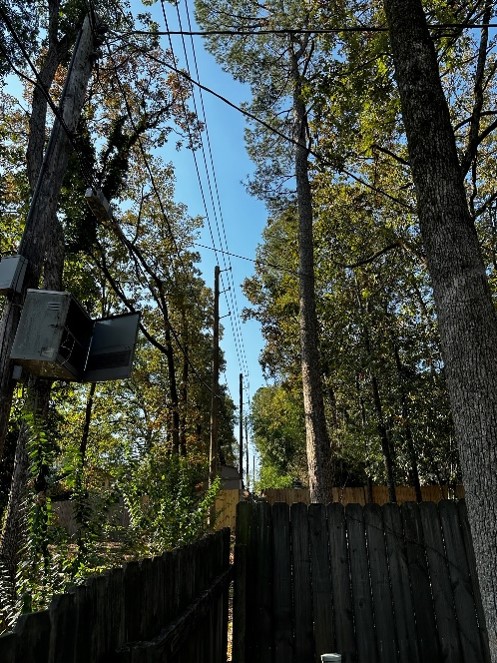Insights > Reaping the benefit of a new design standard
Reaping the benefit of a new design standard
02/29/2024

Severe weather is impacting our region with increased strength and greater frequency. And, we are adapting. As we focus on hardening the grid, our goal is to make prudent investments and upgrades for crews to have a safer, faster restoration the next time a storm hits. One way we are hardening our system is by changing the design standard on pole construction from horizontal to vertical framing.
What may seem like a small change has many benefits. Not only is vertical construction less expensive to build than horizontal framing, but it also involves less parts, creating less points of failure. It is easier for crews to construct and maintain vertical framing on the roadside of the structure and requires less room on the customers’ property for right-of-way. And when a storm hits, vertical framing is more resilient against mechanical damage as vegetation sheds limbs and debris, which allows for faster restoration time.
Case study: Seeing the impact
In the spring of 2023, devastating tornadoes ravaged utility equipment across Arkansas. Crews rebuilt the electric system with upgraded wire, thicker and stronger wooden poles, and concrete poles in some areas, to harden system infrastructure and to make it more resilient against future storms. They also implemented the design change to vertically constructed framing.
When storms impacted the same area a few months later, the benefit was evident: the damage sustained to the new section of line was easier to repair and required less work. The section of line that was legacy construction had about 40 damaged poles, while the area that had been rebuilt to the new standards had no broken poles. Specific benefits from the vertical framing were evident where damage from vegetation was limited and crews were able to replace smaller components instead of entire poles.
“The new poles performed as expected, requiring less equipment and work to repair after the storm,” said Sean Meredith, vice president, project delivery. “At the end of the day, it allowed them to safely get the lights back on faster for our customers.”


Entergy Future Ready: Infrastructure investments
Building electrical infrastructure strong enough to withstand the increased strength and frequency of storms is an important decision that must balance affordability, reliability and sustainability.
“Improving resiliency isn’t a ‘one size fits all’ approach,” Meredith added. “We identified $15 billion of investments to make over the next 10 years to strengthen and enhance our grid through a variety of solutions, including stronger poles, shortened wire spans, new engineering solutions and more.”
Related articles:
- Rebuilding a Mississippi River crossing using an unprecedented 175-mph loading criteria.
- Completing the longest underground project in company history.
- Replacing wooden structures with steel or concrete poles in Louisiana and Mississippi.
Learn more at entergy.com/future.
